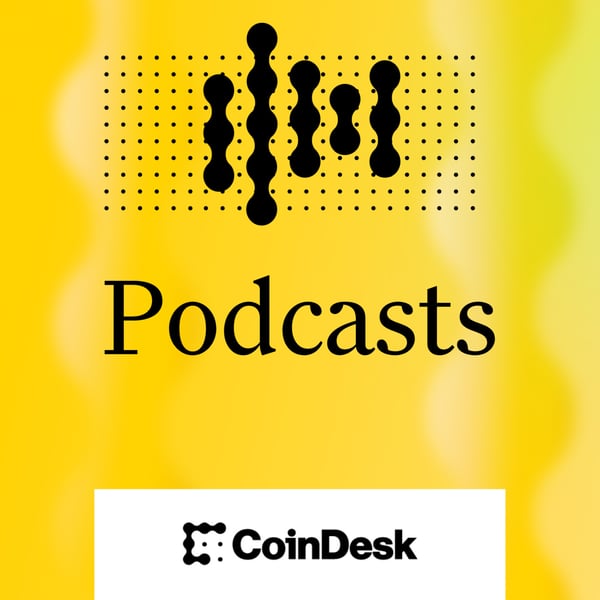RESEARCH: The ‘Hot Swap’ Plan to Switch Ethereum to Proof-of-Stake Explained
CoinDesk Podcast Network
CoinDesk
4.8 • 689 Ratings
🗓️ 19 September 2020
⏱️ 38 minutes
🧾️ Download transcript
Summary
The highly-anticipated launch of Ethereum 2.0 is expected to have little to no impact on users and decentralized applications (dapps) currently operating on Ethereum. But in the years after its launch, Ethereum developer Danny Ryan expects the upgrade to radically improve network performance and security.
This episode is sponsored by Crypto.com, Bitstamp and Nexo.io.
There will be what Ryan calls a “precise point of transition,” where at one block the Ethereum blockchain is progressed and secured through the activity of mining and at the next block it is secured through validating. These two systems of block creation and transaction validation are called proof-of-work (PoW) and proof-of-stake (PoS), respectively.
The Ethereum 2.0 upgrade is the technology and multi-year roadmap intended to transition the world’s second largest blockchain by market capitalization from PoW to PoS.
See also: Ethereum 2.0: How It Works and Why It Matters
There are several security concerns that still need to be addressed by Ethereum developers to ensure that at this point of transition, there is no possibility for 51 percent attacks, block reorganizations, and other edge cases jeopardizing user funds and network data.
To this end, Liz Steininger, CEO of blockchain security company Least Authority, recommends additional audits of Ethereum 2.0 code in preparation for what developers are calling Phase 1.5 of the upgrade roadmap. However, even with multiple audits on top of the ones already completed for the launch of Ethereum 2.0, Steininger foresees inevitable “hiccups and bumps in the road.”
See also: Quantstamp Audit Greenlights Ethereum 2.0 Client Prysm for Launch
“[Flaws in code] isn’t necessarily a failure but it’s a learning opportunity for everybody in the industry to see how these things work at such a large scale,” said Steininger. “If we can overcome the bumps in the road that are undoubtedly going to happen during this large transition then I think that shows a kind of resiliency to the greater world of what blockchain and cryptocurrency and the development space is capable of.”
Ryan has high hopes that after the “hot swap” from Eth 1.0 to Eth 2.0, users and dapp developers will begin to see noticeable improvements to transaction efficiency and throughput on the merged network immediately.
“We want to increase the layer one capacity of the [Ethereum] system by approximately 100x. The benefits we hope to bring to developers is more capacity, cheaper transactions and a better environment for users to interact with and build dapps on,” said Ryan.
For more information about Ethereum 2.0, you can download the free research report featuring additional developer commentary about the upgrade on the CoinDesk Research Hub.
See Privacy Policy at https://art19.com/privacy and California Privacy Notice at https://art19.com/privacy#do-not-sell-my-info.
Transcript
Click on a timestamp to play from that location
| 0:00.0 | Phase zero, I think, has less risk initially. |
| 0:06.7 | Early phases of E2 are designed to be almost entirely decoupled from the existing Ethereum chain. |
| 0:12.3 | It's essentially a bootstrapping phase. |
| 0:15.2 | And so although I'd say phase 1.5 is a much simpler technical task. That's where most of the actual risks are. |
| 0:23.2 | You want to get that thing right no matter what. And fortunately, it is simpler. But in terms of risks to Ethereum, most of the risk is at that point. |
| 0:32.9 | This episode is brought to you by crypto.com, BitStamp, and nexo.io. |
| 0:38.3 | Hello everyone. You're listening to Developer Perspectives, Ethereum 2.0 from CoinDest Podcasts. |
| 0:45.3 | I'm Christine Kim, a CoinDesk research analyst, and in this series we'll be discussing the hotly anticipated Ethereum 2.0 upgrade. |
| 0:53.3 | We'll chat with the folks inside the Ethereum |
| 0:56.0 | developer community to take a look behind the scenes at what comes next. For this episode, |
| 1:01.7 | we're going to be talking about one of the major goals after Ethereum 2.0 launch, and that is |
| 1:07.7 | migrating the existing Ethereum blockchain into the new Ethereum 2.0 ecosystem. |
| 1:13.8 | For today's show, I'm joined by Ethereum 2.0 researcher at the Ethereum Foundation, Danny. |
| 1:20.7 | Hey, how's it going? |
| 1:22.7 | Good. Great to have you. |
| 1:24.8 | Glad to be here today. |
| 1:26.4 | Awesome. I'm also joined by Liz Steininger, the CEO of blockchain security company Least Authority. |
| 1:33.1 | Least Authority has conducted several public audits of Ethereum 2.0 code. |
| 1:37.7 | Its most comprehensive one was released in March and reviewed all the specs related to Ethereum |
| 1:42.5 | 2.0 phase zero launch. Great to have you on the show, Liz. |
| 1:46.7 | Thanks for having me. It's great to be here too. In the last two episodes of this series, we discussed in detail what users could expect right after Ethereum 2.0 goes live. |
| 1:57.4 | We talked about staking and validating, really the only two activities a user will be able to engage in during the first phase of Ethereum 2.0 called Phase 0. |
... |
Please login to see the full transcript.
Disclaimer: The podcast and artwork embedded on this page are from CoinDesk, and are the property of its owner and not affiliated with or endorsed by Tapesearch.
Generated transcripts are the property of CoinDesk and are distributed freely under the Fair Use doctrine. Transcripts generated by Tapesearch are not guaranteed to be accurate.
Copyright © Tapesearch 2025.

